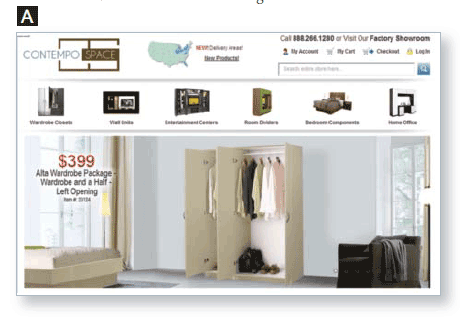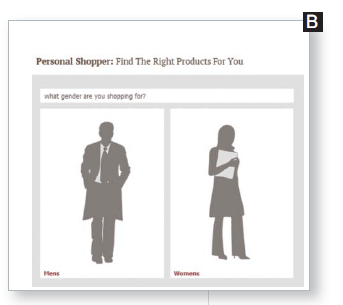What Online Shoppers Want

Three Ways to Keep Consumers Satisfied
Customer satisfaction has a direct impact on a business's immediate and future success, and this is especially true for ecommerce merchants. After all, their competition is just a click away.
In fact, a recent ForeSee study reveals that 71 percent of satisfied site visitors are more likely to make additional online purchases from that retailer and 58 percent more likely to make offline purchases from that retailer, as well. Furthermore, the study found that 69 percent of satisfied visitors are also more likely to recommend the retailer to other consumers. As an Internet merchant, that should serve as sufficient motivation; right?
One question remains: What makes (and keeps) an online shopper satisfied? Let's turn directly to the source for answers. To help online merchants, this editor reached out to her personal online network to ask consumers what they have liked and disliked about their online shopping experiences.
1. Making Products Easy to Find
Both online shoppers and Internet retailers can agree that user-friendly navigation is vital for ecommerce stores since you cannot buy what you cannot find. If a consumer is having a hard time locating a specific item, he or she is likely to abandon the site all together.
Photographer and online shopper Tiela Halpin, for example, did all of her 2012 holiday shopping on the 'Net and counts a site's navigation as most important when searching for products.
"Navigation is key," said Halpin. "If I can't find something I'm looking for quickly I'll become discouraged and look somewhere else."
Custom furniture retailer Contempo Space takes a unique approach to making their site's navigation user friendly. According to the company's Web strategist Chris Sansone, customers often compliment the site's main navigation, which uses icons to represent the main product categories in the top menu bar (see image A below).

"Clicking on a main category will show larger icons for subcategories when they are present," said Sansone. "Again, it's not the most common way to do it, but it's more intuitive for the user. We really didn't want to use real estate on the side of the page with vertical sidebars, and none of us are fans of the expanding top navigation bar that many sites use."
Merchants can optimize their navigation by testing variations of menu headers and analyzing how much traffic each category receives. Moreover, merchants can also measure the effectiveness of their sites' search functionality by monitoring how often consumer searches lead to conversions. Yet, good navigation is just the tip of the iceberg.
2. Offering Robust Product Reviews
Consumer product reviews are arguably the most important influencer in a shopper's decision-making process. Although negative reviews can certainly deter someone from purchasing a product, positive reviews do just the opposite. In fact, a study from eMarketer reveals that consumer reviews are 12 times more trusted than product information or descriptions provided by businesses. Interactive producer Marisa Rodriguez agrees.
"When I find a product I'm interested in, the first thing I do is look for the consumer feedback on that particular product," said Rodriguez. "I think it's so important, and I totally take into consideration the good and bad reviews."
Beauty ecommerce site Lush provides an excellent example of consumer reviews done the right way. The company provides a "Review Snapshot" for every product which displays the average star rating of the product, the percentage of respondents who would recommend the product to their friends, as well as a short list of the product's pros, cons and best uses according to reviewers (Lush's reviews are powered by PowerReviews). Site visitors also have the ability to scroll further down product pages to read each consumer's full review.
Aside from more robust reviews, newer and flashier technology can also impact customer shopping experiences.
3. Enticing with Interactive Technology
It is important for retailers to make their site stand out from the competition. This is where innovative and unique technologies, such as virtual fitting rooms or customization options, come into play.
In fact, even customers who are loyal to traditional shopping, like Jeremie Rosley, can appreciate these types of features.
"I prefer to go shopping in person," said Rosley. "So the more you can bring that experience to online, the happier I am."
One way to bring the traditional shopping experience to the 'Net is with virtual fitting room functionality. Medical uniform retailer Medelita, for example, does this with its "Personal Shopper" app (see image B below).

"We guide the customer through a series of questions to understand their gender, height, weight, body type and medical specialty to determine what products we would recommend based on all of their input," said Medelita's Ecommerce Director Dan Stepchew. "All of these attributes are eventually saved to the user's profile to ensure a highly personalized experience going forward. So far it's been a huge hit, with our conversion rate almost doubling on traffic sent through that interface."
Yet virtual fitting rooms are far from the only way to add a little interactivity to an ecommerce site. Merchants should also consider implementing technologies like social login, guest checkout and live chat to make their site's shopping experience better for visitors than that of their competitors. Ecommerce site PoolDawg.com has found that offering customizable merchandising options also tends to be a hit with consumers.
"Our customers love the additional customization options we offer on our site," said Mike Feiman, president of PoolDawg.com. "We allow customers to upgrade their pool cue tip, change the wrap on their cue and engrave personalized messages. This is a huge draw for our customers shopping for pool cues and engraving is especially popular during the holiday season."
Monitoring Satisfaction Fortunately, online merchants have tangible evidence accessible within their site's analytics to help them discover the features, strategies and technologies that their customers like and don't like. Furthermore, with a little investigation, merchants will find that digitalsavvy shoppers aren't timid when it comes to voicing their opinions about a site's usability. Merchants can leverage platforms like ForeSee, iPerceptions and Opinionlab, for instance, to obtain feedback directly from the people who matter the most - a site's current visitors and loyal customers.
About the Author: Allison Howen is an associate editor at Website Magazine, writing primarily about ecommerce and social media.

Subscribe to Our Newsletter!
Latest in Marketing








